CAA News Today
Mentorship at 2018 CAA Conference
posted by CAA — October 30, 2017
We invite you to participate in our mentorship programs at Career Services during the 106th Annual Conference, taking place February 21-24, 2018, in Los Angeles.
APPLY TO BE A MENTEE
CAA members are invited to apply for one-on-one discussions with dedicated mentors during the annual conference, either as part of the Artists’ Portfolio Review or Career Development Mentoring.
Whenever possible, CAA matches mentees and mentors based on medium or discipline. Sessions are filled by appointment only and scheduled for 8:30 AM–noon and 1:30–5:00 PM Wednesday through Saturday. Conference registration, while encouraged, is not necessary to participate; appointments are offered free of charge.
Participants are chosen by a lottery of applications received by the deadline; all applicants are notified of their scheduled date and time slot via email in January 2018.
Deadline to apply: December 15, 2017
Contact Michelle Stanek, CAA manager of the annual conference, if you have any questions.
ARTISTS’ PORTFOLIO REVIEW
The Artists’ Portfolio Review offers CAA members the opportunity to have images of their work reviewed by artists, critics, curators, and educators in personal twenty-minute consultations. You must bring a charged battery-powered laptop or hard copy of your portfolio to present your work.
To apply, complete and submit the Artists’ Portfolio Review Enrollment Form.
CAREER DEVELOPMENT MENTORING
Career Development Mentoring offers CAA members the opportunity to receive candid advice on how to conduct a thorough job search; present cover letters, CVs, and digital images; and prepare for interviews in personal twenty-minute consultations. You must bring your résumé or CV, your other job-search materials, and your specific career goals to discuss during these appointments.
To apply, complete and submit the Career Development Mentoring Enrollment Form.
APPLY TO BE A MENTOR
Participating as a mentor is an excellent opportunity for you to meet, influence and engage the next generation of emerging artists, scholars, and art professionals. CAA seeks mentors from all areas of studio art, art history, art education, film and video, graphic design, the museum professions, and other related fields. All mentors must demonstrate significant experience in their fields.
Interested candidates must be current CAA members with experience mentoring or advising and be prepared to give between four and nine successive twenty-minute critiques in a three-hour period. Reviewing shifts may occur between Wednesday, February 21, and Saturday, February 24, 2018, from 8:30 AM to noon and from 1:30 to 5:00 PM each day. Conference registration, while encouraged, is not required to be a mentor. Preference will be given to mentors able to serve multiple shifts or multiple days.
ARTISTS’ PORTFOLIO REVIEWERS
Please send your CV and a brief letter of interest (outlining your specialty or field and your scheduling availability during the conference) to Michelle Stanek, CAA manager of the annual conference.
CAREER DEVELOPMENT MENTORS
Please send your CV and a brief letter of interest (outlining your specialty or field and your scheduling availability during the conference) to Michelle Stanek, CAA manager of the annual conference.
Career Development Mentoring is not intended as a screening process by institutions seeking new hires. CAA does not accept applications from individuals whose departments are conducting a faculty search in the field in which they are mentoring. Mentors should not be attending the conference as candidates for positions in the same field in which mentees may be applying.
Registration is Open for CAA’s 106th Annual Conference
posted by CAA — October 16, 2017
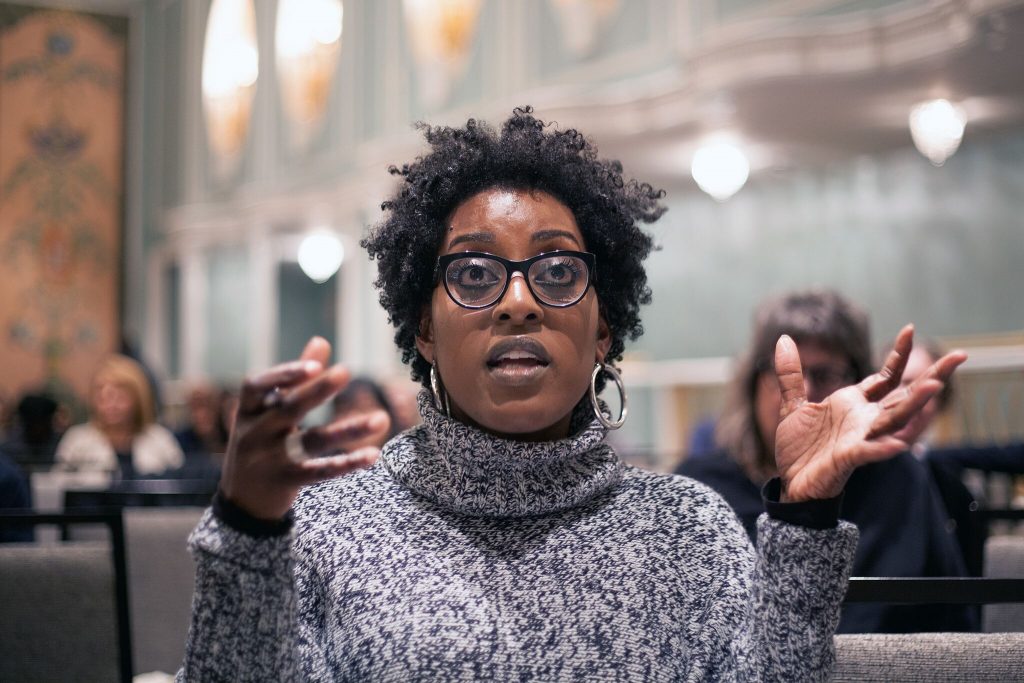
Curator and anthropologist Niama Safia Sandy at the CAA 105th Annual Conference New York, 2017. Photo: Ben Fractenberg
Change has been an ongoing topic of conversation in planning the 106th Annual Conference in Los Angeles, February 21-24, 2018. In our meetings with LA-based civic and cultural organizations, the topic came up over and over again. From the new museums opening in downtown, housing astonishing collections, to the protests in Boyle Heights over gentrification, LA is undergoing a metamorphosis. The parallels to CAA, which is undergoing its own transformation, were hard to ignore. We held close these discussions about changes, both CAA’s and LA’s, in designing the content and experience for the Annual Conference. We look forward to bringing together the international visual arts community once again to connect and learn in the great city of Los Angeles.
Registration form for mailing for faxing.
Book your hotel room at the lowest rates and take advantage of travel discounts.
For registration rates and deadlines visit the registration page.
View the schedule for the 2018 Annual Conference.
The 2018 Annual Conference will include over 300 themed sessions, covering discussions on medieval tapestry, contemporary issues in Latinx art, and community engagement through the arts, among many other topics. The Annual Conference will include its Annual Artist Interviews, as part of ARTspace, made possible in part with a generous grant from the National Endowment for the Arts. Past interviewees have included Coco Fusco, Katherine Bradford, Joyce Scott, and Rick Lowe. The schedule for the 2018 Annual Conference is packed with more professional-development workshops than ever, a long list of LA-museums and cultural institutions our attendees can visit for free with their conference badges, and Special Events like a reception at The Getty, guided tours of “Jasper Johns: Something Resembling Truth” at The Broad, and breakfast at LACMA, to name a few.
We are thrilled to welcome Charles Gaines and Wu Hung as our Keynote Speaker and our Distinguished Scholar for 2018.
Convocation Keynote Speaker
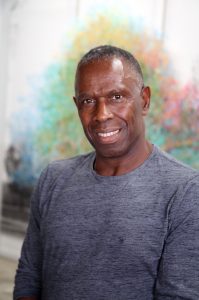
Charles Gaines, 2018 Keynote Speaker, Photo by Katie Miller
Charles Gaines is an LA-based artist whose complex grid-work and mapping pulls from conceptual art and the field of philosophy. More on Charles Gaines and his 2015 solo show at the Hammer Museum, “Charles Gaines: Gridwork: 1975-1989.”
2018 Distinguished Scholar
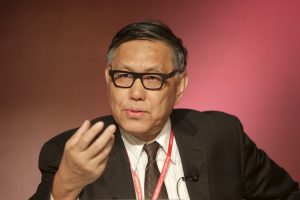
Wu Hung, 2018 Distinguished Scholar, Photo by Kuni Takahashi
Wu Hung is the Harrie A. Vanderstappen Distinguished Service Professor of Art History and East Asian Languages & Civilizations at The University of Chicago. Wu is a scholar of traditional and contemporary Chinese art and a curator. See the 10 artworks to see China differently that Wu Hung chose for CNN.
The remainder of the CAA Awards for Distinction will be announced later in the fall, as well as the inaugural recipient of CAA’s new Excellence in Diversity Award.
Also new this year is the Cultural and Academic Network Hall, an opportunity for participating museums, colleges, and universities to reserve a full booth to promote academic or cultural programs to conference attendees, as well as the general public. It will be a great way for department leadership and alumni offices to connect with past students and faculty and to meet new students and instructors. Participants will be able schedule time in one of the sixteen interview booths that will be created adjacent to the booth area within the Network Hall.
As always, we thank all our sponsors at all levels who help make this amazing conference possible.
We look forward to seeing you in LA!
ARTexchange Submissions for CAA 2018 – Deadline Extended!
posted by CAA — September 05, 2017
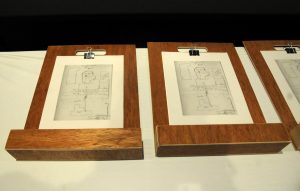
The Services to Artists Committee invites artist members to participate in ARTexchange, CAA’s pop-up exhibition and annual meet-up for artists and curators. This social event provides an opportunity for artists to share their work and build affinities with other artists, historians, curators, and cultural producers. ARTexchange will take place at the 106th Annual Conference in Los Angeles on Friday evening, February 23, 2018, from 5:30 to 7:30 PM.
Each artist is given the space on, above, and beneath a six-foot table to exhibit their work: prints, paintings, drawings, photographs, sculptures, and small installations; performance, process-based, interactive, and participatory works are especially encouraged. CAA encourages creative use of the space and in the past this set up has sparked many unique displays. Please note that artwork cannot be hung on walls, and it is not possible to run power cords from laptops or other electronic devices to outlets.
To participate as an exhibiting artist in 2018, email caaprograms@collegeart.org, with “ARTexchange” and your last name in the subject line, by (deadline extended!) December 15, 2017, with the following information: (1) a short description of what you will exhibit and how you will use the six-foot table space (provide details regarding performance, sound, spoken word, or technology-based work, including laptop presentations); (2) your CAA member number (memberships must be active through February 24, 2018); and (3) your website or a link to a digital portfolio.
Because ARTexchange is a popular venue and participation is based on available space, early applicants are given preference. Participants are responsible for their work; CAA is not liable for losses or damages. Sales of work are not permitted.
CAA Receives NEA Grant for ARTspace
posted by michaelh — August 11, 2017

CAA has been awarded a $25,000 Art Works grant from the National Endowment for the Arts to support the next installment of ARTspace, taking place during the 2018 Annual Conference in Los Angeles. Spearheaded by CAA’s Services to Artists Committee, ARTspace is a forum for programming designed by artists for artists that is among the most vital and exciting aspects of the conference. Held at each Annual Conference since 2001, ARTspace is intended to reflect the current state of the visual arts and arts education. The grant is the NEA’s ninth consecutive award to CAA for this event.
ARTspace offers free program sessions and includes diverse activities such as the annual Distinguished Artist Interviews—most recently with Coco Fusco and Katherine Bradford at the Annual Conference in New York last February—and screenings of film, video, and multimedia works in the Media Lounge. Also hosted in ARTspace are live performances and panel discussions that facilitate a conversational yet professional exchange of ideas and practices designed to engage CAA’s artist members as well as the general public.
ARTspace programming for 2017 included sessions on economic fairness and internet activism, artists who collaborate with their families, alternative career paths for artists outside the studio and academia, and a roundtable on artist-run institutions. CAA’s 106th Annual Conference will take place February 21–24, 2018, at the Los Angeles Convention Center and at schools, museums, and other institutions throughout Southern California.
Jane Chu, chairman of the NEA since 2014, has approved over $84 million to fund nearly 1,200 projects and partnerships in all fifty US states in the NEA’s second major funding announcement for fiscal year 2017. The Art Works category focuses on funding the creation of art that meets the highest standards of excellence, public engagement with art, lifelong learning in the arts, and strengthening of communities through the arts. Through grants to thousands of nonprofits each year, the NEA promotes opportunities for people in communities across America to experience the arts and exercise their creativity.
For the full list of 2017 Art Works grants visit the NEA website.
CAA 2018 Professional Development Workshop Proposal
posted by CAA — June 13, 2017
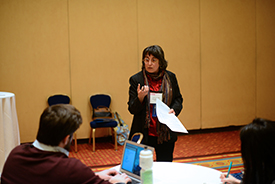 Ends on July 9, 2017
Ends on July 9, 2017
CAA seeks Professional Development Workshop leaders for the 2018 Annual Conference taking place at the Los Angeles Convention Center from February 21–24. The Association seeks active members who are well-established in their respective fields to serve as leaders for ninety-minute Professional Development Workshop offerings at the conference. The Annual Conference Committee and Programs Department have provided sample titles and/or subjects below, but welcome innovative topics and formats.
Requirements:
- Completed Submission form (see below) with related attachments and a succinct description of workshop
- Detailed syllabus for the workshop that outlines both activities and a proposed timeline for the ninety minutes (the selection committee encourages workshops that have active components such as guided discussions, writing exercises, and hands-on activities; the committee discourages lecture formats)
- List of required materials workshop participants should bring (laptops, resumes, etc.)
- An active CAA Membership ID number (All workshop leader(s) must be current individual CAA members through February 24, 2018.)
Compensation:
- Complimentary Full-Conference Registration
- 1 year of Premium Level Membership (renewal or upgrade to commence upon current membership’s expiration date)
Please visit CAA’s page on the Submittable website for more information and to apply. Questions regarding submission? Contact Katie Apsey at kapsey@collegeart.org or 212-392-4405.
List of Sample Topics, Subjects, or Titles:
Activating Audiences and Cultivating Engagement
Assessing and Comparing Citation Management Systems: Scrivner, Refworks, Retero
Basic Finance for Artists and Academics
Business Strategies and Negotiation for the Arts
Creating an Online Presence: Using Social Media Professionally
Creating Online Exhibitions
Finding Grants and Fellowships
Freelance Lecturing: A Guide
Fundraising Fundamentals for Academics
Get Out of the Office/Studio!: A Public Speaking Workshop
Getting a Job in the Arts in the Current Economic Climate
Getting into the Digital Humanities…
Interdisciplinary Practice: Successful Collaboration across Disciplines
International Post-Doctoral/Post-MFA Funding Opportunities
Legal Issue Primer for Artists and Art Historians
Marketing 101 for the Arts
Post-Doc Position: Right or Wrong Choice for You?
Record Keeping and Archiving: Importance and Efficiency
Researcher and Artist: How They Can Collaborate
Strategies for Teaching Assistants
Syllabus Development
Technologies for Teaching: Canvas, Piazza, M+Box, Google Suite
The Great Divide(s): Bridging the Museum, Gallery, and Academic Worlds
Thinking Outside or Beyond the Tenure Track
Working with Images: Copyright and Digitization
CAA 2018: Los Angeles Travelogue
posted by CAA — May 03, 2017
Director of Programs Tiffany Dugan and I just returned from a week in Los Angeles to make plans for CAA’s Annual Conference in 2018.
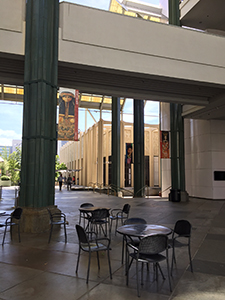
Los Angeles County Museum of Art
Scheduled for February 21-24 at the LA Convention Center, the 106th CAA Annual Conference promises to be one of the strongest ever. When the online session submissions portal closed last week, we had more than 800 submissions – one of the largest numbers in recent years. The Annual Conference Committee is reviewing the submissions this month and will be making final selections.
Based on past conference attendance, we anticipate more than 4,000 conference attendees in Los Angeles. We expect to schedule more than 250 sessions and over 200 events, including meetings, receptions, and tours. To house everyone, we secured three principal hotels, all within walking distance of the Convention Center, guaranteeing 6,000 guest nights.
We visited with the staffs and toured the Westin Bonaventure, Millennium Biltmore LA, and JW Marriott. Hotel rooms for the conference will range from $139 to $269 a night, depending on which hotel you select and the type of room you want. The John Portman designed Westin Bonaventure will be our host hotel and has the cool elegance reflecting the beginning of LA’s downtown revival in the mid-1970s. The Biltmore, which opened in 1923, reflects the opulence and beaux-arts style from LA’s golden age as the film industry was in its burgeoning stage. The new, swank JW Marriot is closest to the Convention Center and at the door of all the urban excitement of L.A. Live. All three hotels are within walking distance of the Convention Center. And the Westin even has a good cup of coffee below $2 in the lobby!
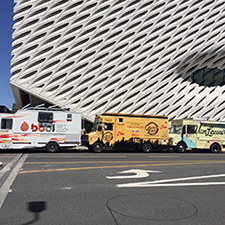
Food trucks in front of the Broad
Near the hotels, we found lots of great restaurants – everything from a hearty breakfast at the Original Pantry Café (which is open 24 hours) to the Blue Cow Kitchen & Bar, Bunker Hill Bar & Grill, Bottega Louie, Eat.Drink.Americano, and Water Grill. Food trucks are on virtually every corner (you have to try the sushi burrito). And there are plenty of artisanal coffee shops as well. In the coming months we will be working on setting up discounts at local restaurants and businesses for our attendees. Our hosts at the LA Convention Center gave us a great tour and we were able to see where the registration area, book and trade fair, and sessions rooms will be. We were able to secure more creature comforts like additional seating between sessions for impromptu conversations, charging stations for phone and laptops, and a quiet room to decompress from the hustle and bustle of the conference.
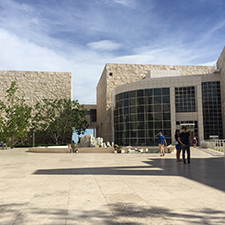
Getty Center
The Getty Museum, LACMA, and MOCA all opened their doors to us and we had great meetings. Each institution is looking forward to CAA 2018 and is making plans to ensure that your visit is meaningful. We met with leaders at UCLA and USC. In upcoming trips, we will be meeting with leaders at the Norton Simon Museum, The Huntington Library, Hammer Museum, Fisher Museum, and The Broad, as well as Otis College of Art and Design, Pasadena City College, Santa Monica College, and many others.
We also toured other cultural organizations including REDCAT, The Brewery Artist Lofts, Japanese American Museum, Chinese American Museum, 18th Street Arts Center, A+D Architecture and Design Museum, Craft and Folk Art Museum and many others. They are looking forward to welcoming CAA members to visit during the conference. We are planning on a day of programing for local LA area artists at the Annual Conference similar to what we did in NYC this year.
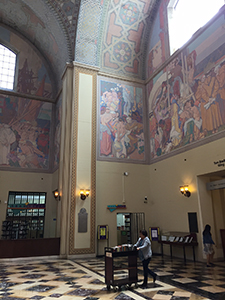
Los Angeles Public Library
Colleges and universities interested in holding reunions and receptions at the Annual Conference will also be able to find great spaces for their events. While there are some beautiful rooms available at the CAA hotels, we saw great spaces at the Hilton Checkers (check out the roof top terrace), the LA Public Library (check out the rotunda and courtyards), the gallery district in Chinatown (check out the Charlie James Gallery and A.G. Geiger Fine Art Books), and Hauser & Wirth. There are plenty of galleries in Hollywood and the Arts District, which will be available as well. We will keep adding to this list to create alternative reception options. Since the weather will be mild, there will be plenty of opportunities to sneak away from the Conference Center and check out what LA has to offer.
If you have not been to LA in a while, you will be happy to discover that getting around is easier than ever. While your CAA membership can get you a discount on an Avis rental car, ride sharing programs such as Uber and Lyft are popular and often cost less than $5 per trip between key cultural locations. LA has also been making great progress on its public transportation system as Metro stations are popping up everywhere.
Many thanks to Annual Conference Chair Judith Rodenbeck and CAA Regional Reps John Tain and Neha Choksi, who, along with Anu Vikram and Niku Kashef, made lots of great recommendations. If you have any more ideas of places you would like to see, just let Tiffany or me know.
Finally, we’ve pulled together all the details for the Getty sponsored Pacific Standard Time and will be offering that information in the months to come. You may want to arrive earlier to make sure that you take in as much as you can. President’s Day weekend is just before the Annual Conference. Be sure to watch CAA News for more updates about the conference as we solidify our planning.
Hunter O’Hanian
Executive Director
Conference Submissions for CAA 2018
posted by admin — April 07, 2017
Projects and Proposal Deadlines April 17 and 24
The Annual Conference Committee invites proposals of interest to its members and varied audiences. Submissions that cover the breadth of current thought and research in art and art practice, art and architectural history, theory and criticism, studio art, pedagogical issues, museum and curatorial practice, conservation, design, new media, and developments in technology are encouraged.
To submit a proposal, individuals must be current CAA members. All session participants, including presenters, chairs, moderators, and discussants, must also be current individual CAA members. Please have your CAA Member ID handy as well as the member IDs of any and all participants as this is a required field on the submission form. Please note that institutional member IDs cannot be used to submit proposals. If you are not a current individual member, please renew your membership or join CAA.
All session participants must also register for the conference. Online registration for CAA 2018 will begin October 2, 2017. Early conference registration will end December 15, 2017 and advance conference registration will end on February 7, 2018. Early and advance conference registration fees will not change from CAA 2017, New York.
The Annual Conference Committee will accept the following proposals for review: Complete Sessions, Sessions Soliciting Contributors, and Individual Paper/Project proposals. All sessions will be 90 minutes in length at CAA 2018. Please plan accordingly. For full details on the submission process for the conference, please review the information below and on the individual submission pages.
PROPOSAL SUBMISSION TYPES
Session Soliciting Contributors
SUBMISSION DEADLINE: April 17, 2017
The Session Soliciting Contributors option allows a submission for a full session (90 minutes in length) with yet-to-be identified speakers and papers/projects. If selected, such sessions will be included in the call for participation (CFP) which opens June 30.
Individual Paper/Project
SUBMISSION DEADLINE: April 17, 2017
Individual Paper/Project proposals (15 minutes in presentation length) may be submitted for review. No specific theme is required. The Annual Conference Committee will review and select paper/project proposals based on merit and group approved submissions into Composed Sessions of up to four participants. A liaison from the Annual Conference Committee will be identified for each Composed Session to assist with the format and to help identify a session chair or moderator.
Complete Session
SUBMISSION DEADLINE: April 24, 2017
The Complete Session option allows a submission for a complete panel (90 minutes in length) pre-formed with participants and papers/projects chosen in advance by session chairs. This session requires advance planning and information gathering by the chair(s).
Affiliated Societies
SUBMISSION DEADLINE: April 24, 2017
Each Affiliated Society may submit either one Complete Session proposal (90 minutes in length) pre-formed with participants and papers/projects chosen in advance or one Session Soliciting Contributors proposal (90 minutes in length) to be included in the CFP which opens June 30. A note of approval from the Affiliated Society chair must accompany the submission. This session will be guaranteed and will be identified as an Affiliated Society session in all CAA publications.
Subsequent proposals by Affiliated Society members may be submitted separately by individuals, but are subject to peer review by the Annual Conference Committee and must be submitted via the Complete Session, Session Soliciting Contributors, or Individual Paper/Project submissions forms described above. These submissions are not guaranteed and, if selected, will not be labeled or identified as Affiliated Society sessions in CAA publications.
CAA PIPS Committees
SUBMISSION DEADLINE: April 24, 2017
CAA PIPS committees may submit either one Complete Session proposal (90 minutes in length) pre-formed with participants and papers/projects chosen in advance or one Session Soliciting Contributors proposal (90 minutes in length) to be included in the CFP which opens June 30. A note of approval from the committee chair must accompany the submission. This session will be identified as a committee session in all CAA publications.
Subsequent proposals by committee members may be submitted separately by individuals, but are subject to peer review by the Annual Conference Committee and must be submitted via the Complete Session, Session Soliciting Contributors, or Individual Paper/Project submissions forms described above. These submissions are not guaranteed and, if selected, will not be labeled or identified as committee sessions in CAA publications.
GENERAL SUBMISSION GUIDELINES
- All sessions will be 90 minutes in length at CAA 2018. Please plan accordingly.
- All session proposals must be completed and submitted online.
- To submit a proposal, individuals must be current CAA members. All session participants, including presenters, chairs, moderators, and discussants, must also be current individual CAA members. Please have your CAA Member ID handy as well as the member IDs of any and all participants as this is a required field on the submission form. Please note that institutional member IDs cannot be used to submit proposals. If you are not a current member, please renew your membership or join CAA.
- All session participants must also register for the conference. Online registration for CAA 2018 will begin October 2, 2017. Early conference registration will end December 15, 2017 and advance conference registration will end on February 7, 2018. Early and advance conference registration fees will not change from CAA 2017, New York.
- CVs are required for panel proposals where the chair and, if applicable, the co-chair are known.
- Session and paper/project abstracts should be no more than 250 words in length.
- The accuracy of information entered into the proposal form (e.g. spelling of names, affiliations, titles) is important as it will be pulled directly from this database for conference publications such as Abstracts 2018 and the conference website.
- The Annual Conference Committee makes its selections solely on the basis of merit and works to create a balanced program. Where proposals overlap, CAA reserves the right to select the most considered version or, in some cases, to suggest a fusion of two or more versions from among the proposals submitted.
- If their proposals are accepted, CAA members may participate in session panels in consecutive years.
- For more information about session proposals for the 2018 Annual Conference, please contact Katie Apsey, CAA manager of programs, at 212-392-4405 or Tiffany Dugan, CAA director of programs, at 212-392-4410.
KEY DATES
- February 27 – Call for Annual Conference session and paper/projects proposals begins
- Proposal Submission Deadlines for CAA 2018:
-
- April 17 – Proposal submission deadline for Sessions Soliciting Contributors
- April 17 – Proposal submission deadline for Individual Paper/Projects
- April 24 – Proposal submission deadline for Complete Sessions
- April 24 – Proposal submission deadline for Affiliated Societies and CAA PIPS Committees
- May 15 – Call for Professional Development Workshop Proposals begins
- June 19 – Notifications sent regarding approved sessions for CAA 2018
- Key dates for approved Sessions Soliciting Contributors included in the Call for Participation (CFP):
-
- June 30 – CFP for approved Sessions Soliciting Contributors announced (includes Poster Sessions)
- August 14 – Paper/Project submission deadline to chairs of Sessions Soliciting Contributors; deadline for Poster Session submissions
- August 28 – Session chairs send notifications to participants selected from CFP; Poster Session notifications sent
- September 18 – Deadline for all chairs to submit final abstracts and website listings to CAA
- October 2 – Online conference registration opens
- December 15 – Early conference registration closes
- February 7 – Advance conference registration closes
How to Submit a Sharp Proposal for CAA 2018
posted by CAA — April 07, 2017
We are enjoying spring break as much as you are, but we also know that CAA has upcoming deadlines for proposing a session or paper for the 106th Annual Conference in Los Angeles, February 21–24, 2018.
In this video, Hunter O’Hanian, executive director of CAA, and Tiffany Dugan, director of programs, discuss what makes a great Conference proposal. We think your submission should contain clear writing, and your idea should be thoughtful. We want you to be accurate and complete when using the submission portal also.
The Annual Conference Committee, comprised of regional representatives, members of the Board, and CAA members at large, are in search of proposals that reflect the breadth and variety of our discipline and field, and demonstrate the expertise and curiosity of our membership also. Especially welcome are proposals from artists and on subjects in art before 1800.
The deadlines to propose a session or paper for the 2018 Annual Conference in Los Angeles are April 17 and April 24, 2017. Full details are available on the submissions website.
Serve on a CAA Award Jury
posted by tiffany — March 16, 2017
CAA invites nominations and self-nominations for individuals to serve on seven of the twelve juries for the annual Awards for Distinction for three years (2017–20). Terms begin in May 2017; award years are 2018–20. CAA’s twelve awards honor artists, art historians, authors, curators, critics, and teachers whose accomplishments transcend their individual disciplines and contribute to the profession as a whole and to the world at large.
Candidates must possess expertise appropriate to the jury’s work and be current CAA members. They should not hold a position on a CAA committee or editorial board beyond May 31, 2017. CAA’s president and vice president for committees appoint jury members for service.
Jury vacancies for spring 2017:
- Alfred H. Barr Jr. Award: two members
- Artist Award for a Distinguished Body of Work: two members
- CAA/AIC Award for Distinction in Scholarship and Conservation: one member
- Distinguished Feminist Award: two members
- Distinguished Lifetime Achievement Award for Writing on Art: one member
- Distinguished Teaching of Art History Award: one member
- Frank Jewett Mather Award: two members
Nominations and self-nominations should include a brief statement (no more than 150 words) outlining the individual’s qualifications and experience and a CV (an abbreviated CV no more than two pages, may be submitted). Please send all materials by email to Katie Apsey, CAA manager of programs; submissions must be sent as Microsoft Word or Adobe PDF attachments. For questions about jury service and responsibilities, contact Tiffany Dugan, CAA director of programs.
Deadline Extended: May 31, 2017.
Thanks to 2017 Career Services Mentors and Workshop Leaders
posted by CAA — March 14, 2017
CAA extends a warm thank-you to all of the artists, scholars, curators, critics, educators, and other visual-arts professionals who served as Career Services mentors during the 2017 Annual Conference. Your knowledge and expertise helped to enrich the Artists’ Portfolio Review, Career Development Mentoring, and Mock Interviews. We also appreciate the efforts of the members who created and led Professional Development Workshops and Brown Bag Sessions based on members’ needs.
Artist’s Portfolio Review
Susan Canning, Sculpture; Jill Conner, Artists Studios; Carrie Ida Edinger, Independent Artist; Nancy Hart, Artist/263 Gallery; Richard Heipp, University of Florida; David Howarth, Zayed University; Paul Hunter, Artist/Painter; Jason Lahr, University of Notre Dame; Suzanne Lemakis, Citibank, retired; Sharon Lippman, Art Without Walls; Craig Lloyd, Mount St. Joseph University; Yelena McLane, Florida State University; Dinah Ryan, Principia College; Paul Bernard Ryan, Mary Baldwin University, Emeritus; and Greg Shelnutt, Clemson University.
Career Development Mentoring
Susan Altman, Middlesex County College; Michael Aurbach, Vanderbilt University, Emeritus; Roann Barris, Radford University; Colin Blakely, University of Arizona; Leda Cempellin, South Dakota State University; Crista Cloutier, The Working Artist; Rebecca J. DeRoo, Rochester Institute of Technology; James Farmer, Virginia Commonwealth University; Reni Gower, Virginia Commonwealth University; Antoniette (Toni) Guglielmo, Getty Leadership Institute; Dennis Ichiyama, Purdue University; Zach Kaiser, Michigan State University; Ann B. Kim, University East; Carol Herselle Krinsky, New York University; Emmanuel Lemakis, CAA, retired; Jeffery Cote de Luna, Dominican University; Heather McPherson, University of Alabama, Birmingham; Liliana Milkova, Oberlin College; Mark O’Grady, Pratt Institute; Doralynn Pines, CAA; Thomas Post, Ferris State University; Heather Snyder Quinn, DePaul University; Jack Risley, University of Texas at Austin; Andrew Svedlow, University of Northern Colorado; Joe A. Thomas, Kennesaw State University; Ann Tsubota, Raritan Valley Community College; and Barbara Yontz, St. Thomas Aquinas College.
Mock Interview Sessions
Megan Koza Mitchell (Student and Emerging Professionals Committee Chair), Prospect New Orleans; Amanda Wainwright (Student and Emerging Professionals Committee), University of South Carolina; Tamryn Mcdermott, Temple University; Annie Storr, Brandeis University; Lauren Puzier, Sotheby’s; Abbey Hepner, University of Colorado; Rachel Kreiter, Spelman College; Nathan Manuel (Student and Emerging Professionals Committee); Lauren O’Neal, Lamont Gallery, Phillips Exeter Academy; DeWitt Godfrey, Colgate University; Dennis Ichiyama, Purdue University; Rachel Stephens, University of Alabama; Matt King, VCU School of the Arts; Carol Garmon, University of Mary, Washington; Craig Lloyd, Mount St. Joseph University; Maile S. Hutterer, University of Oregon; Mark O’Grady, Pratt Institute; Thomas Post, Kendall College of Art and Design; Greg Shelnutt, Clemson University; Maria Ann Conelli, Brooklyn College, City University of New York; Rebekah Beaulieu, Bowdoin College Museum of Art ; David LaPalombara, Ohio University; Arthur Blake Pierce, Valdosta State University; Michael Lobel, Hunter College; Susan Altman, Middlesex County College; David Howarth, Zayed University; and Colin Blakely, University of Arizona.
Brown Bag Lunches and Sessions
Megan Koza Mitchell (Student and Emerging Professionals Committee Chair), Prospect New Orleans; Amanda Wainwright (Student and Emerging Professionals Committee), University of South Carolina; Tamryn Mcdermott, Temple University; Annie Storr, Brandeis University; Lauren Puzier, Sotheby’s; Abbey Hepner, University of Colorado; Rachel Kreiter, Spelman College; Nathan Manuel, SEPC; Andrea Kirsch, Rutgers University; and Mattie M. Schloetzer, National Gallery of Art.
Professional Development Workshops
Maria Michails, Rensselaer Polytechnic Institute; Susana Sevilla Aho, Modern Language Association; Susan Altman, Middlesex County College; Michael Aurbach, Vanderbilt University, Emeritus; Emily Pugh, Getty Research Institute; Elizabeth Buhe, Institute of Fine Arts, New York University; Petra ten–Doesschate Chu, Seton Hall University; Kate Kramer, University of Pennsylvania; Shannon Connelly, Lebanese American University; Craig Dietrich, The Claremont Colleges; Jon Ippolito, University of Maine; John Bell, Dartmouth College; Molly Fox, Indiana University; Rebekah Beaulieu, Bowdoin College Museum of Art; Deborah Lutz, Pamela Lawton, Annie Leist, and Emilie Gossiaux, all from the Metropolitan Museum of Art; Alexa Sand, Utah State University; Sara Orel, Truman State University; Jenn Karson, University of Vermont FabLab; Martha Schwendener, New York Times/New York University; Jack Henrie Fisher, University of Illinois, Chicago; and Alan Smart, University of Illinois, Chicago.



